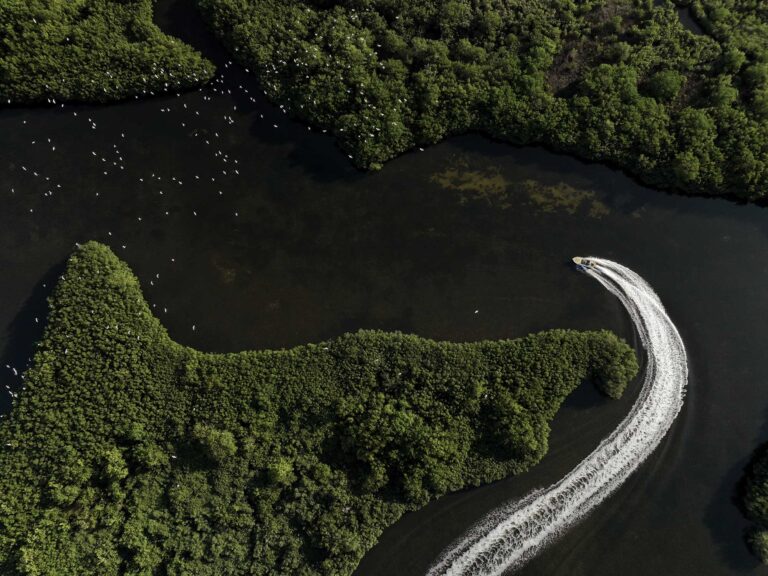
If you’ve been fishing for any length of time, you undoubtedly have met someone along the way who has been the unfortunate victim of skin cancer. While most cases are benign and do not generally metastasize, the threat of deadly melanoma is an ever-present reality to saltwater fly-fishermen.
Those who spend extended periods of time under an intense sun are more vulnerable to this potentially fatal disease, and for years anglers have paid careful attention to sun-protection factor (SPF) ratings associated with sunscreen products commonly applied before and during a day of fishing.
But increasingly, as apparel manufacturers develop ever more advanced products, anglers are wising up to the fact that the very clothes they wear can also play a dramatic role when it comes to protecting their bodies.
Cover It Up
To be sure, anglers should always apply liberal amounts of sunscreen to bare skin that comes in direct contact with the sun – the higher the SPF rating, the better. But they should pay equal attention to ultraviolet-protection factor (UPF) ratings associated with their clothing.
Developed by Australian researchers in 1996, UPF ratings define the amount of ultraviolet light that penetrates a fabric. A UPF rating of 30 indicates that one-thirtieth of the ultraviolet light hitting the fabric actually penetrates it.
“It’s so important,” says Jaelithe Milich, marketing communications specialist at ExOfficio, a Tukwila, Washington-based apparel manufacturer. “A regular T-shirt has a UPF of about 7. You may not get sunburned through that T-shirt, but you’ll get a lot of rays penetrating through it that could affect you in the long term – especially in a tropical environment.”
So what factors play a role in increasing a garment’s UPF rating?
Several things, most notably the composition of the yarns, the tightness of the weave or knit (a tighter weave improves the rating), color (darker colors are generally better) and stretch (more stretch lowers the rating). Additionally, fabrics often produce a lower rating when wet, and garments become less effective when timeworn or faded.

“[But] tighter fabric weaves, heavier-weight fabrics and darker colors are not always the best way to achieve a high UPF rating,” says Diane Bristol, director of marketing and brand management at Simms Fishing Products. “The combination of a tighter weave, which is less breathable, heavier fabric and dark color would make this type of shirt uncomfortable for a hot-weather fishing environment.”
The goal, says Bristol, is to “offer the lightest-weight fabrics in light colors and still achieve a ‘very good’ or ‘excellent’ UPF rating.”
Simms has a number of products that do just that, and Bristol points to the company’s Ultralight shirt, which boasts a UPF 30 rating and weighs only 5.4 ounces. It’s an ideal shirt to wear in a tropical environment.
Of course, fabric composition is paramount to effective sun protection, but so too are engineering and innovation, says Milich. For example, ExOfficio’s popular Air Strip shirt features a three-position sun collar that can be adjusted to protect the neck based on the angle of the sun. Plus, the company’s Neptune line of shirts features sleeves that overlap the back of an angler’s hands.
“It’s the little things like that can really protect you in vulnerable areas,” she says.
Branching Out
Speaking of little things, most everyone reading this publication is familiar by now with headgear company Buff. Entering the U.S. market in 2003, Buff’s simplistic face-mask products took off like wildfire among anglers seeking additional protection around the neck and face.
And this year, according to marketing assistant Kate Slater, Buff is joining the ranks of fly-fishing companies that have jumped into the next phase of angler protection in apparel; they’re incorporating insect-repelling products into their line.
Every angler knows that the sun is not the only potential hazard in many of the world’s great fly-fishing destinations – biting insects can also be murder. And they’re potentially dangerous, as malaria, West Nile virus and dengue fever can be transmitted through their bites.

Through a licensing agreement with Insect Shield LLC, Buff is offering a new line of products treated with permethrin, an Environmental Protection Agency-registered odorless, tasteless repellent that wards off mosquitoes, ticks, ants, flies, chiggers and midges.
These critters are attracted to carbon dioxide emitted from the human body (through the nose and mouth, as well as the skin), but the permethrin disorients them and keeps them away.
For some time, ExOfficio has also produced insect-repellent apparel through a similar partnership with Insect Shield, as have Orvis, L.L. Bean and RailRiders.
Simms is also entering the category in 2010 with a new line of permethrin-based No-Fly Zone products developed in conjunction with Burlington Labs. Not only will these garments keep the pests away, but they also offer an astounding 50 UPF rating, Simms’ highest ever.
From sun protection to insect repellents, fly-fishing apparel has come a long way – and today’s products are nothing less than investments in your health.
Manufacturers
Buff Inc.
Sacramento, California
888-276-BUFF
www.buffwear.com
ExOfficio
Tukwila, Washington
800-644-7303
www.exofficio.com
Simms Fishing Products
Bozeman, Montana
866-585-3570
www.simmsfishing.com









